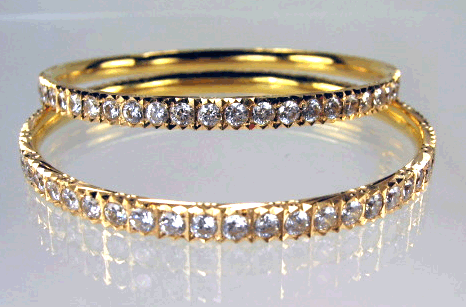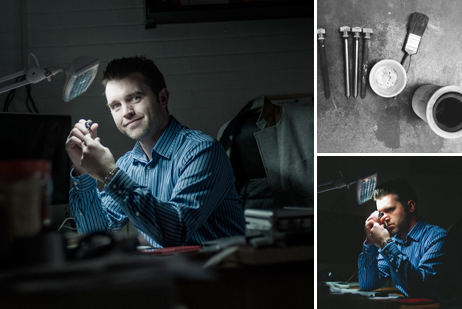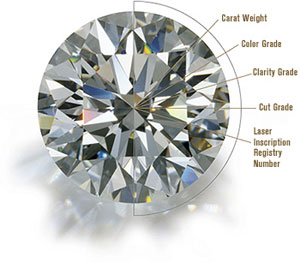Because we wear jewellery as we move around, it is at a great risk from accidental damage or loss unless special care is taken.
Fragile gemstones or crystal beads shatter if hit against a hard surface. A soft, 18 carat gold ring wears paper-thin if it is worn constantly, especially if it lies next to another ring of harder metal.
If it is asking for trouble in the form of damage or loss – if you wear jewellery while doing domestic work. A diamond will not be harmed by immersion in water, but it could split in two if knocked hard. Emeralds, sapphires, aquamarines and opals may well shatter on exposure to even hand-hot water.
The colour of stones such as topaz and turquoise changes with prolonged exposure to strong light; opals chip and crack very easily when exposed to heat; and pearls may lose their lustre and yellow or darken if they get too dry. Ivory is particularly prone to cracking in heat, sunlight or a dry atmosphere, or if it gets wet. Costume jewellery if often made of base metals such as brass and copper which may corrode, and simulated stones which may gradually fade over time.
To guard against loss, regularly check that chain links, fastenings and settings are secure. Constant opening and closing weakens a clasp, and sharp edges on beads fray the thread on which they are strung. If a pearl necklace is worn a great deal – the lustre is said to improve as pearls absorb natural oils from the skin – it should be checked about every six months, and professionally restrung if necessary, with some strong, purpose made necklace thread, knotted between each pearl both to prevent the beads rubbing against each other and to guard against all the pearls scattering if the string breaks. Pin heavy brooches into material that is sturdy enough to take their weight (if necessary, into the strap of an undergarment), and consider having safety chains fitted.
Apply hairspray and perfume before you put on your jewellery. These substances usually contain alcohol or chemicals which act as solvents or chemical reagents on certain materials, including plated gold, mother-of-pearl, amber, jet, coral and on porous gemstones such as turquoise, opals, and pearls.
Storage
Avoid mixing different types of jewellery in one box. Many materials used in jewellery, ranging from precious stones, glass and jade to shell cameo, ivory and enamel, may become chipped if they are kept jumbled up with other, harder materials. A hard, sharply cut stone like a diamond will scratch gold, silver and softer stones.
Necklaces and strings of beads can be hung or wound around a roll of acid free paper to prevent tangling. Otherwise, keep each item of jewellery in its own box, or wrap it separately in clean, acid-free tissue or soft, pure cotton or linen cloth.
Cleaning
Knowing the materials in a piece of jewellery is vital before any cleaning process is undertaken, so check with a jeweller who works with antique pieces. Ancient jewellery should be cleaned professionally as age and the softer metal used make it very fragile.
Porous stones like opals and pearls should never be immersed in water as they lose their natural lustre. These and most other items, including most metal jewellery, can be gently buffed with a soft jeweller’s cloth (available from a jewellers), or wiped gently with a very slightly dampened chamois leather. Remember that plated and rolled gold will wear if rubbed too much, and on no account should the matt-finish gold found on some 19th century jewellery be polished.
If a strung necklace or bracelet gets wet the thread will shrink and eventually rot. As long as the beads are water-resistant, they can be cleaned individually with slightly dampened cotton-wool buds. Enamel is very delicate and should only be dusted gently or blown clean. Ivory, too, should only be cleaned with a dry, soft-bristled brush as it absorbs water and stains; for ingrained dirt go to an expert.
Stones in a closed setting should not be allowed to get wet as water may lodge behind the stones and trigger corrosion or weaken any adhesive. Clean instead with a cotton-wool bud dipped in clear pure alcohol, then rinse and dry with cotton buds. If you are confident that a piece can be safely immersed in water, do not risk losing it forever by washing it over an open sink or plughole. Instead put some lukewarm water with a few drops of mild or non-ionic detergent in a small bowl. Place this on a tray with raised edges and covered with a towel or cloth. Immerse the item in the water and very gently ease out the dirt with a soft-bristled brush, or a wooden cocktail stick for stubborn grime in small areas. Rinse the jewellery in a separate bowl of clear water and allow it t dry naturally on a piece of absorbent kitchen paper. Cameos, jet, gold and silver items can all be cleaned in this way.
Restoration
Jewellery repairs should be carried out by a reputable jeweller who is used to working with antiques, and should be combined with an overall check of settings and clasps. If you want to glue an item of jewellery yourself- a hard gemstone, for example- remove any old adhesive first and remember that the repair is unlikely to be easily reversible.











